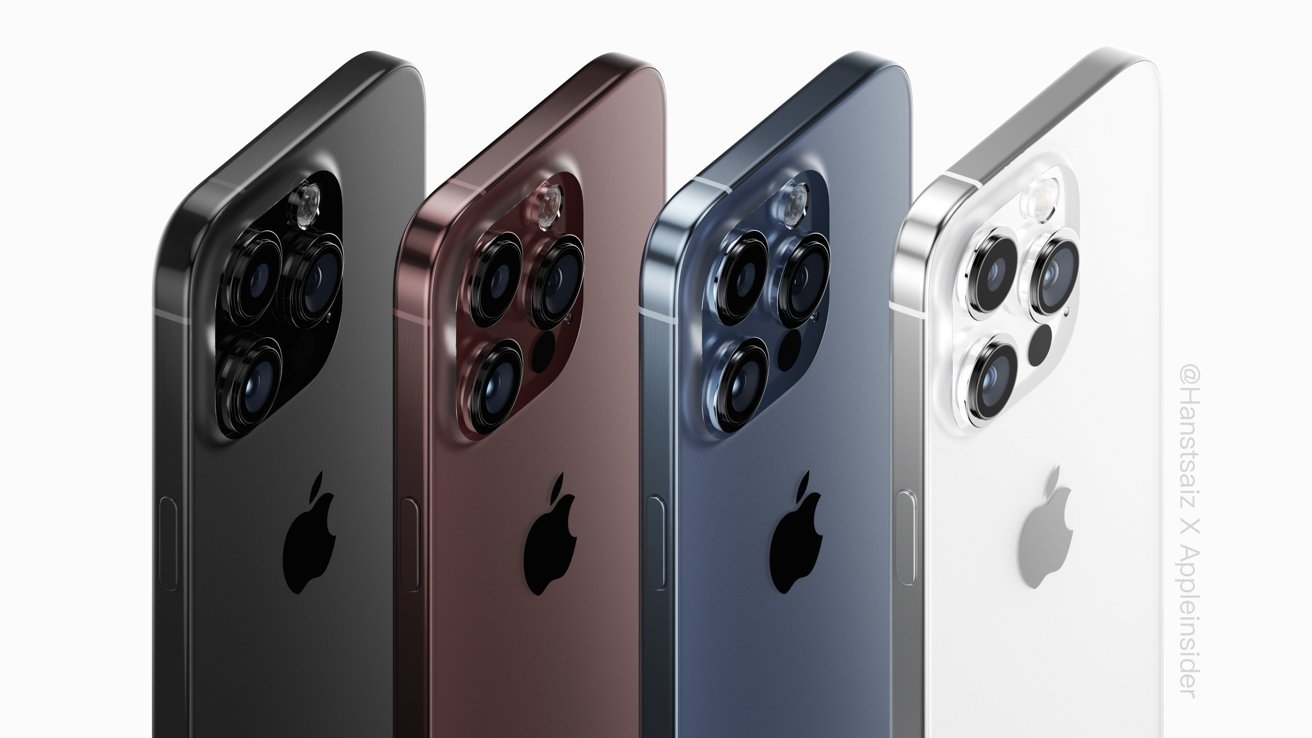The iPhone 15 is rumored to use a "stacked battery" that could result in lower heat and a better overall battery life.
Battery technology advances often result in devices having more power available to use, among other improvements. According to one leaker, it seems the iPhone 15 will benefit from one major technological change.
Prolific Android leaker "@RgcloudS" posted a tweet about stacked battery development in Samsung devices, but also passes comment on Apple. While Samsung's "on track" to introduce a stacked battery for smartphones, the leaker writes "Apple used it on entire iP15 lineup," referencing the iPhone 15.
If true, this could result in a number of benefits to the iPhone 15 range when it comes to power, including faster charging, higher capacities, and a considerably extended battery life.
1/3
— RGcloudS (@RGcloudS) July 12, 2023
Stacked battery is on track, but limited
Most likely only for 24U & 24+
or just 24U
meanwhile,
apple used it on entire iP15 lineup
24U & 24+ have "rated" 5000 MaH
But 24U stacked structure is different
to make it cooler, they applied cooling gel. for 65W & stability https://t.co/8khM2oAToc
The leaker doesn't go into detail about Apple's own batteries but does discuss Samsung's prototype samples. Samsung's apparently still waiting for stacked battery equipment to arrive at a plant owned by subsidiary Samsung SDI.
What is a stacked battery?
A stacked battery is a specific method of producing battery cells, or at least in how the elements of a battery are assembled and packaged.
A battery is made up of positive electrodes and negative electrodes, produced in long strips. In a typical battery cell, these are rolled up in a "winding" process before being packaged.
A stacked battery cell instead uses the elements as well as separators, but folds them into zig-zagging layers instead of a roll., in what is referred to as lamination.
By using folded layers instead of a roll, the packaged cell has less wasted space compared to a wound cell, so more material is included and therefore it offers a higher capacity.
The layered construction also means the battery works as a multi-pole battery rather than a single-pole wound battery. This allows there to be less resistance in the battery itself, so there is far less heat generated when it is charged or discharged.
The heat is also generated more uniformly throughout the cell, instead of being focused on a single area. Spreading the heat across the battery means it won't get worn out as quickly compared to wound battery cells, extending its life.
The stacked battery is also capable of being charged and discharged at far higher rates. This equates to faster charging of devices, as well as the potential for those devices to draw more power from the battery if required.
While a relatively new technology for smartphones, the technology has already shown some promise in another field. It is commonly used to produce batteries for electric vehicles, a device that needs to massively draw power and to recharge as quickly as possible, and benefits greatly from higher densities.
 Malcolm Owen
Malcolm Owen
![A stacked battery can be more dense than a wound battery [Grepow]](https://photos5.appleinsider.com/gallery/55416-112576-stackingbattery-xl.jpg)







-m.jpg)






 Andrew Orr
Andrew Orr

 William Gallagher
William Gallagher

 Wesley Hilliard
Wesley Hilliard





-m.jpg)




11 Comments
I heard they’re using cold fusion.
DeWalt introduced stacked batteries for their power tools a bit over two years ago. I have a 1.7 amp hour one and a 5 amp hour one. I don’t know anything about the ones proposed for phones, but the ones for power tools are replacing conventional cylindrical cells. So they’re smaller. But more importantly they have greater power draw. If a tool is designed for it, it can output a fair amount more power. Sometimes more than a third more. I can tell you from my own experience with them that it’s true.
but a phone isn’t an electric motor. And this isn’t replacing a battery of cylinders as it is in power tool batteries. So it’s hard to say what the difference will be. I don’t expect more than a modest improvement from this.
Hi Mel. Appreciate the comments. I would speculate that the benefits will come as faster charging and a battery that lasts a few more years. (Just armchairing it)
Your schematic of a stacked battery is incorrect. You can't make bend radii that small without causing cell shorts.
A stacked battery is made from individual bi-cells stacked, with tabs welded together at one end. Apple has been using both wound and stacked batteries for years, even in the iPhone. All other things being equal, the stacked design does have some advantage in terms of lower impedance which helps enable faster charging.